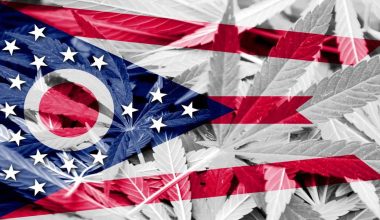
Federal law enforcement agents and their partners seized over 5.5 million cultivated marijuana plants and made more than 6,600 marijuana-related arrests in 2021, according to annual data compiled by the US Drug Enforcement Administration.
According to figures published in the DEA’s Domestic Cannabis Eradication/Suppression Program Statistical Report, agents and their partners confiscated approximately 5.53 million cultivated cannabis plants last year – a 20 percent increase over 2020’s totals. Law enforcement also reported making 6,606 marijuana-related arrests, a 25 percent increase over the prior year’s totals (when agents reported 4,992 arrests).
The totals are the highest reported by the agency since 2011, when it reported making an estimated 8,500 marijuana-related arrests and seized some 6.7 million plants via its domestic eradication program. Since that time, annual arrests have generally trended below 6,000 per year, while cannabis seizures fell to an all-time low in 2018 (when an estimated 2.8 million plants were confiscated).
Commenting on the data, NORML’s Deputy Director Paul Armentano said: “At a time when the overwhelming majority of voters support legalization, and when more and more states — and even members of Congress — are moving toward this direction, it is troubling to see federal agents and their local partners reversing course and reinvigorating their marijuana-related enforcement activities.”
NORML’s Political Director Morgan Fox added: “The fact that these interdiction efforts are growing — at great cost to the taxpayer — despite increasing momentum for legalization is a testament to the failure of federal prohibition and unnecessarily burdensome state regulatory policies. Lack of access to banking services and capital, high barriers to entry into legal cannabis markets, and exorbitant tax rates at all levels of government are clearly hampering the ability of licensed cannabis businesses to compete with the unregulated market. The solutions to this situation are beyond obvious at this point, and they don’t involve law enforcement officers putting themselves at risk by dropping out of helicopters or conducting armed raids. It is incumbent on policymakers to pursue evidenced-based, market-oriented, and justice-focused policies to minimize unregulated cannabis activity, and they’ve never had a better opportunity to do so.”
Federal agents and their local partners also reported seizing of $103 million in assets in 2021 as part of the program — more than double the amount seized in 2020.
As in past years, the overwhelming percentage of plant seizures (86 percent) and arrests (60 percent) nationwide took place in California. Law enforcement also reported confiscating large quantities of cultivated plants in Kentucky (317,621) and in Oklahoma (158,124).
The DCE/SP began funding eradication programs in Hawaii and California in 1979, and has since branched out into most every state.
Related
Medical Disclaimer:
The information provided in these blog posts is intended for general informational and educational purposes only. It is not a substitute for professional medical advice, diagnosis, or treatment. Always seek the advice of your physician or other qualified healthcare provider with any questions you may have regarding a medical condition. The use of any information provided in these blog posts is solely at your own risk. The authors and the website do not recommend or endorse any specific products, treatments, or procedures mentioned. Reliance on any information in these blog posts is solely at your own discretion.






